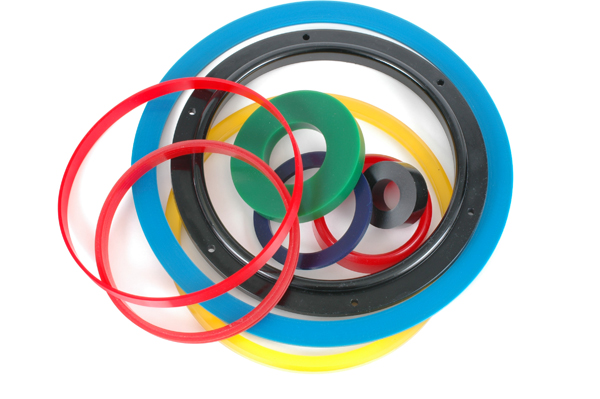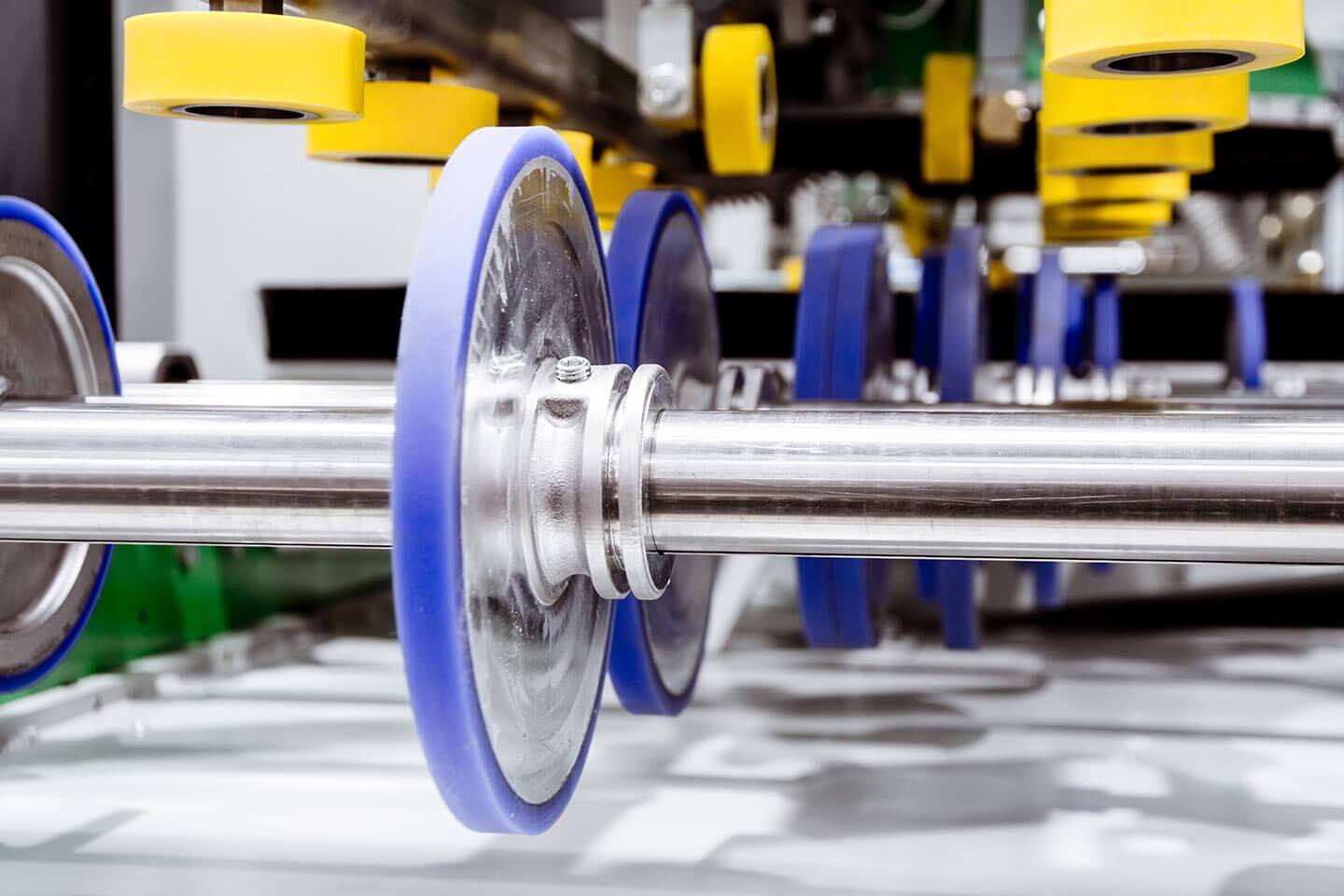
So many industries turn to PSI Urethanes for urethane rings. Bottling companies use PSI’s urethane rings as torque wheels; companies with conveyor belt systems use them as bumpers; and still other production facilities will slip urethane rings on a shaft and use them as an idler roller. As versatile as urethane rings are, there’s an important reason companies choose urethane over rubber, another popular material for industrial applications. Why? Let’s compare the two and you’ll see!
Comparing Urethane Rings & Rubber Rings
Elasticity & Compression
Urethane rings maintain their elasticity and strength over the complete range of hardnesses. They can be stretched and still return to their original dimensions, even at high durometers. A plastic may break or fail to return to its original size, while rubber may crack and deteriorate quickly.
On the flip side of elasticity is compression. Urethane is better when it comes to compression set and has a broader range of durometers (hardness) to fit many applications. At PSI, we have custom formulations in a variety of durometers ranging from “dead” for shock absorbing and “rebound” for repeated flexing.
Abrasion & Tear Resistance
Urethane rings outperform rubber rings when it comes to abrasion resistance and tear strength. When severe abrasion is a factor, urethane has been known to outwear other materials by a factor of five-to-one to ten-to-one. Rubber rings have some abrasion and tear resistance, but nowhere close to the strength of urethane rings.
Chemical Resistance
When it comes to chemicals and ozone, urethane surpasses rubber. Urethane rings maintain excellent resistance to mineral-based oils, hydrocarbons, fats, greases, petroleum products, and specific solvents. When exposed to the same elements, rubber rings can degrade rapidly, especially if the rubber compound is not compatible with the environment that it comes into contact with. Rubber rings tend to be generally resistance to organic acids, alcohols, ketones, and aldehydes.
Temperature Resistance
Urethane rings remain flexible at low temperatures, while rubber tends to harden. The technicians at PSI can even formulate urethane to remain flexible in Arctic-like conditions and temperatures as high as 250 degrees Fahrenheit, or to sustain sudden drops in temperature. (Though we don’t recommend continuous use in water hotter hotter than 180 degrees Fahrenheit.) Depending on your application, rubber rings can prove more efficient than urethane rings in very high temperatures and for wet coefficient of friction.
For the Right Urethane Rings, Give PSI Urethanes a Ring!
Call (800) 888-5156 or request a quote online at any time. You’ll speak with an experienced representative who will get to know your project and ring requirements. We’ll ask about the function of the ring, what it will come in contact with, as well as the ID/OD dims and whether you’ll need on or off mandrel tolerances.
“On mandrel” is when urethane is generally poured exact. In its relaxed state it shrinks down, but when it is put over a shaft, it expands for a tight fit. “Off mandrel” is when urethane is in its relaxed state and generally does not fit very tightly. Understanding the exact nature of your application will help us determine the best urethane formulation for your needs. Call (800) 888-5156 today to learn more!

